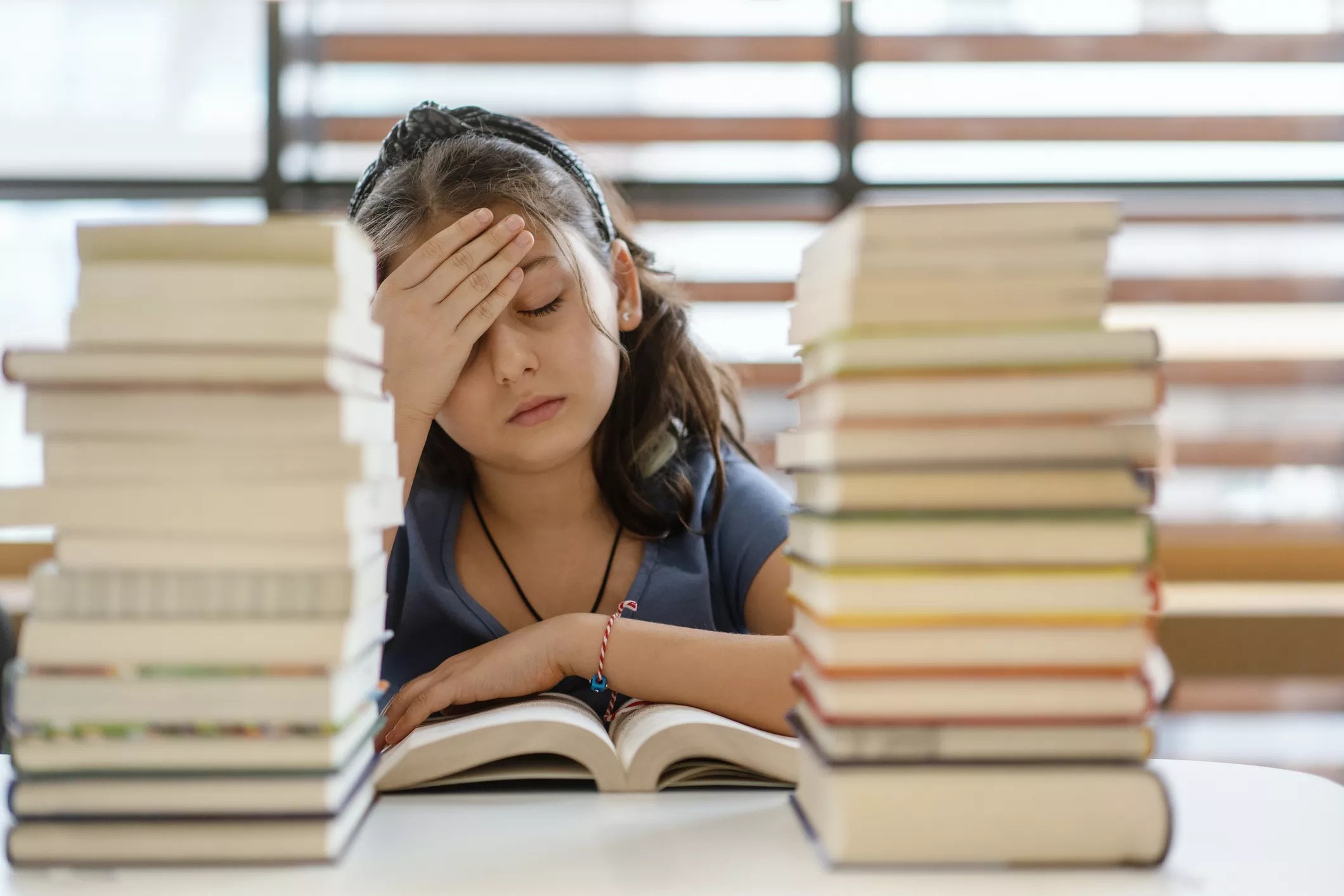
ozgurdonmaz/Getty Images

Audio By Carbonatix
Samantha Hounihan is a biology teacher at Cactus High School in Peoria. With her freshmen students, she routinely runs into an instructional problem that has nothing to do with cells, mitosis or photosynthesis.
Too few of them read well enough to learn the material, with some struggling to read basic case studies. The teenagers are supposed to be preparing for adulthood, and yet too many are already behind.
“It’s bad as they walk in the door,” Hounihan said. “For them to not know basic vocabulary words as I’m trying to teach them new scientific vocabulary, it becomes a whole vocab lesson.”
Hounihan’s experience is hardly an anomaly in Arizona. The state’s students need help reading, and they’re not getting it from policymakers.
Will you step up to support New Times this year?
At New Times, we’re small and scrappy — and we make the most of every dollar from our supporters. Right now, we’re $15,500 away from reaching our December 31 goal of $30,000. If you’ve ever learned something new, stayed informed, or felt more connected because of New Times, now’s the time to give back.
Currently, just 41% of Arizona’s third-grade public school and charter students are reading at their grade level, compared with 67% nationally. That means more than half are lagging at reaching a crucial milestone, as third grade is when many students no longer learn to read but instead read to learn. A student’s literacy rates at this age can predict their future success in their academic and professional life.
Students with lower literacy levels have fewer chances of long-term success and are more likely to drop out of high school. When they reach advanced classes such as the one taught by Hounihan, whose job is not to help with nouns and adverbs, the teachers of those courses are left to pick up the pieces as best they can.
Curtailing this phenomenon is critical to ensuring academic success and a successful adult life, but like so many of the state’s students, Arizona has a lot of catching up to do. Since 2013, Arizona officials have attempted to improve literacy levels with Read On Arizona initiative, a statewide objective to boost literacy rates to 72% by 2030. Instead, third-grade proficiency hasn’t improved at all since 2016.
So why can’t enough Arizona students read? The reasons are multifaceted, but most of them come down to one thing: a lack of resources. Teachers blame bloated class sizes and a chronic absenteeism problem that Arizona has struggled to correct since the COVID-19 pandemic. They especially blame school vouchers, which have sapped funds from the public school system.
“When you habitually divest from a system and continue to take money away, especially in lower socioeconomic areas, we see these low literacy rates,” said Raquel Mamani, an elementary school teacher and a board member of the advocacy group Save Our Schools Arizona. “If there’s no money for literacy, there’s no money for the school.”
She added, “Arizona’s in a really, really devastating point.”
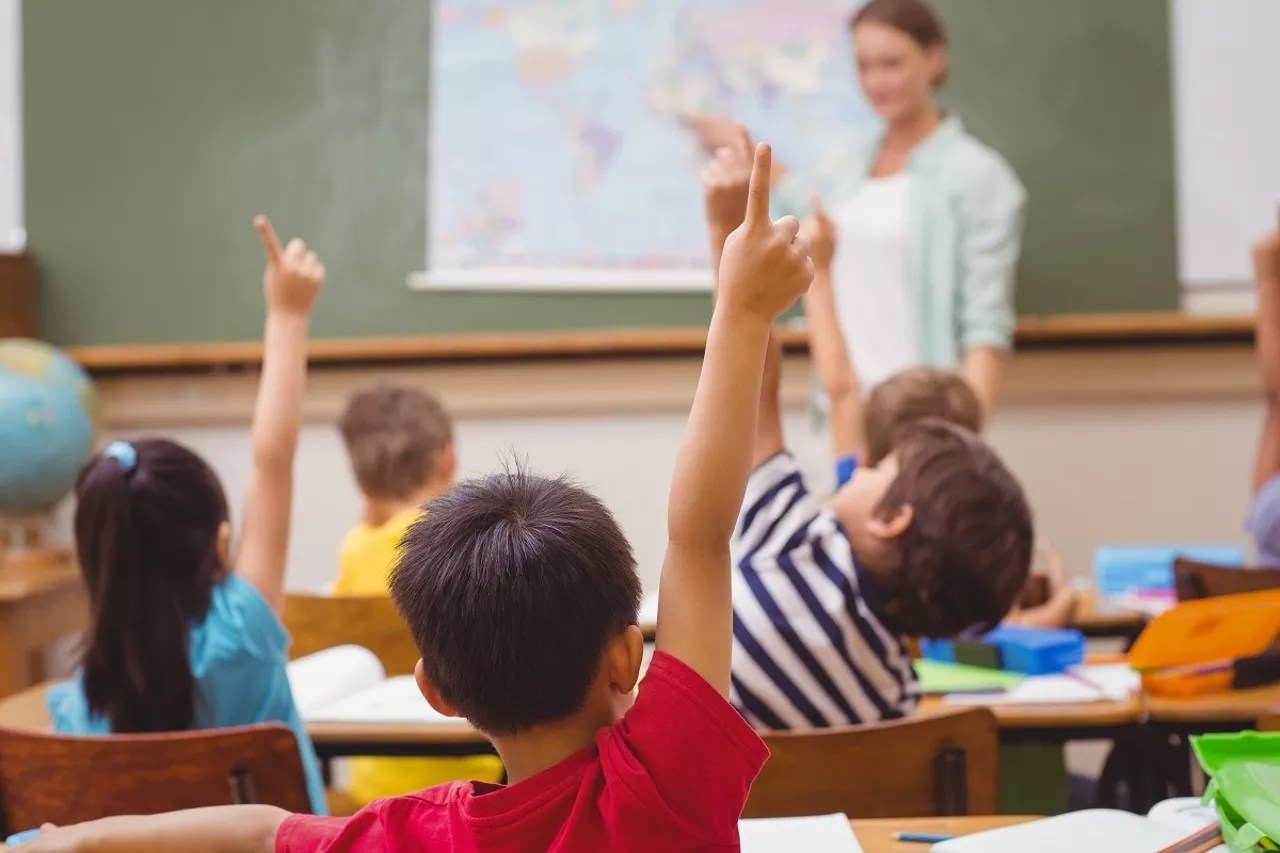
A stock photo of a teacher in an elementary school classroom.
wavebreakmedia / Shutterstock
Overcrowded classrooms
Terri Clark doesn’t deny the numbers. Arizona’s literacy rate is far below where it should be.
Clark is the state’s literacy director, and she agrees that a lack of resources is a problem.
“We’ve got research that continues to tell us how to teach reading well and how kids learn to read,” she said. “We just need to support schools and be able to deliver that high-quality literacy instruction that every child should have access to.”
Arizona’s teachers would love that support. Many say they’re not getting it.
Kathleen Heyman lays some of the blame at the foot of class sizes. As a fifth-grade teacher in Peoria public schools for nearly 26 years, she was constantly challenged by overcrowded classrooms. At one point, she said, she had more than 30 students in a class.
“It’s very difficult; it slows things down for the whole class,” Heyman said. “There’s just not enough time in the day to deal with students with behavior problems. Those things really affect literacy for the whole group.”
Heyman is now retired from teaching, but her daughter has continued in her footsteps, building a teaching career of her own. Heyman says the class size problem is only getting worse. In the 2020-21 school year, the most recent year for which data is available, Arizona’s average class size was 22.6 students, slightly higher than the national average of 20.7. That school year encompassed much of the pandemic, so the average class size is likely larger now.
“(The students) need more time, smaller class sizes,” Heyman said. “I can’t tell you the fabulous effect that would have.”
One thing is keeping class sizes down – but it’s not helping literacy. Thanks to Arizona’s “school choice” regime, which has allowed charter schools to proliferate and has allowed taxpayer money to be spent on private school education, some public school districts are facing enrollment issues.
With lower enrollment comes fewer funds. Heyman attributes part of the blame to Arizona’s voucher program, formally known as Empowerment Scholarship Accounts.
“The money is going somewhere else,” she said.
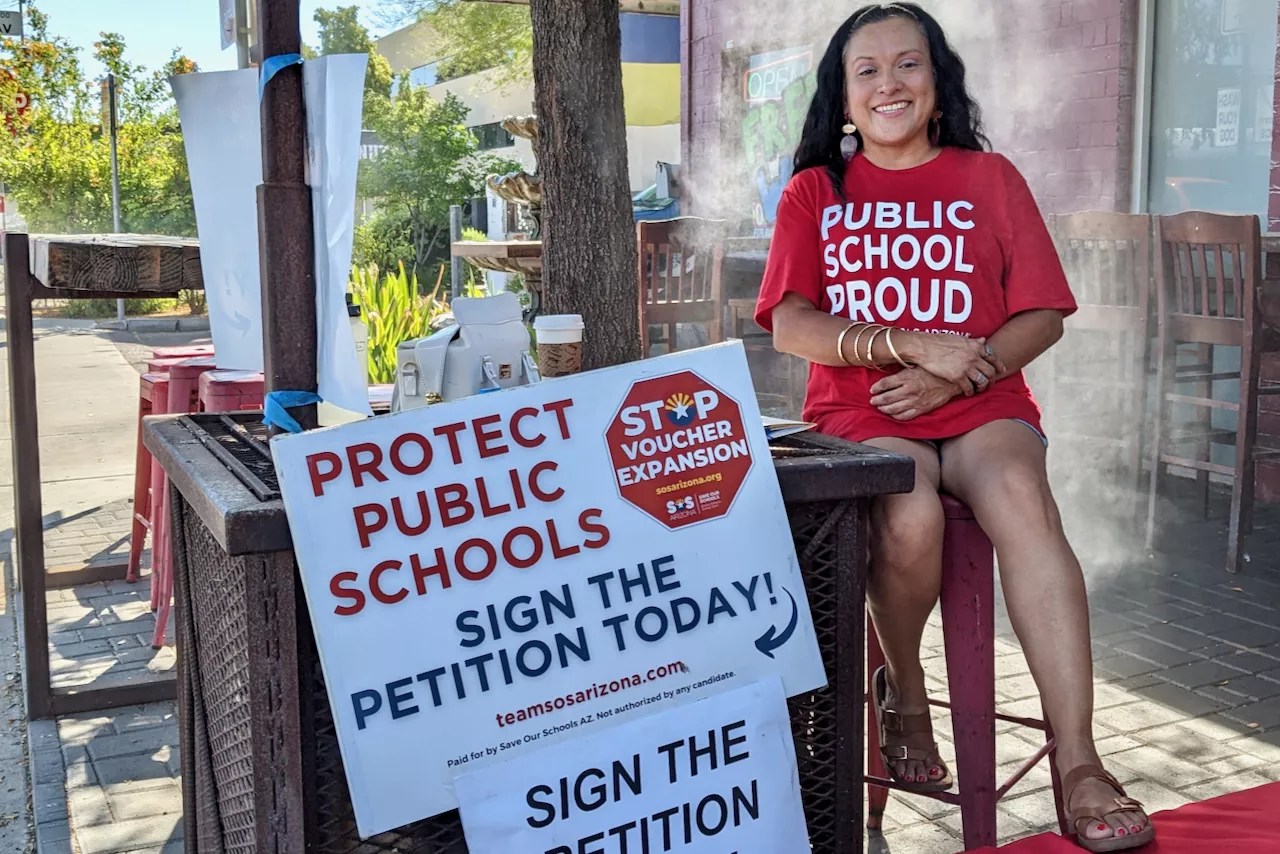
The expansion of the school voucher program has been one of Arizona’s defining political battles over the last decade.
Matt Hennie
The role of ESAs
The rise of ESAs led to a $332 million deficit in the Arizona state budget for fiscal year 2024. That number is projected to grow in the coming years, according to a study by the Grand Canyon Institute. It’s costing Arizona public schools – Arizona ranks last in the nation for public education, per a study by Consumer Affairs.
ProPublica found that these vouchers are hardly used by lower-income families. Instead, affluent families are taking advantage of them, depriving public schools of funding while benefiting private schools. The program also has been rife with fraud. Earlier this month, Arizona Attorney General Kris Mayes announced charges against a couple who allegedly bilked the state of $110,000 in ESA funds for fake children.
“It’s off the rails, it’s out of control, and it’s costing Arizona,” Mamani said. “It’s budget-busting, and without any oversight, it’s just right for fraud.”
Even when used legally, ESAs hurt public schools. Recently, the Roosevelt School District Governing Board voted to shutter five schools to close the district’s $5 million budget deficit. An investigation by 12News found that the voucher program played a significant role in this deficit, with parents using the vouchers to move their children into private schools.
A 2023 report from Save Our Schools said that if only six students in a school leave to use an ESA voucher at a private school, the burden on the public school or district is equivalent to a full-time teacher’s salary.
“Over $900 million drained from public education means every one of Arizona’s public schools loses out on $300,000 in desperately needed dollars that will likely result in teacher layoffs and suddenly unaffordable fixed costs such as repairing broken-down A/C and buses,” the report said.
Less money for schools means less money for teacher bonuses, increased salaries and even the additional materials students need to succeed. Notably, Arizona ranks 32nd in the nation for teacher pay, and a recent study said that more than half of Arizona teachers have considered leaving the profession.
It’s hard to teach kids to read if you don’t have teachers.
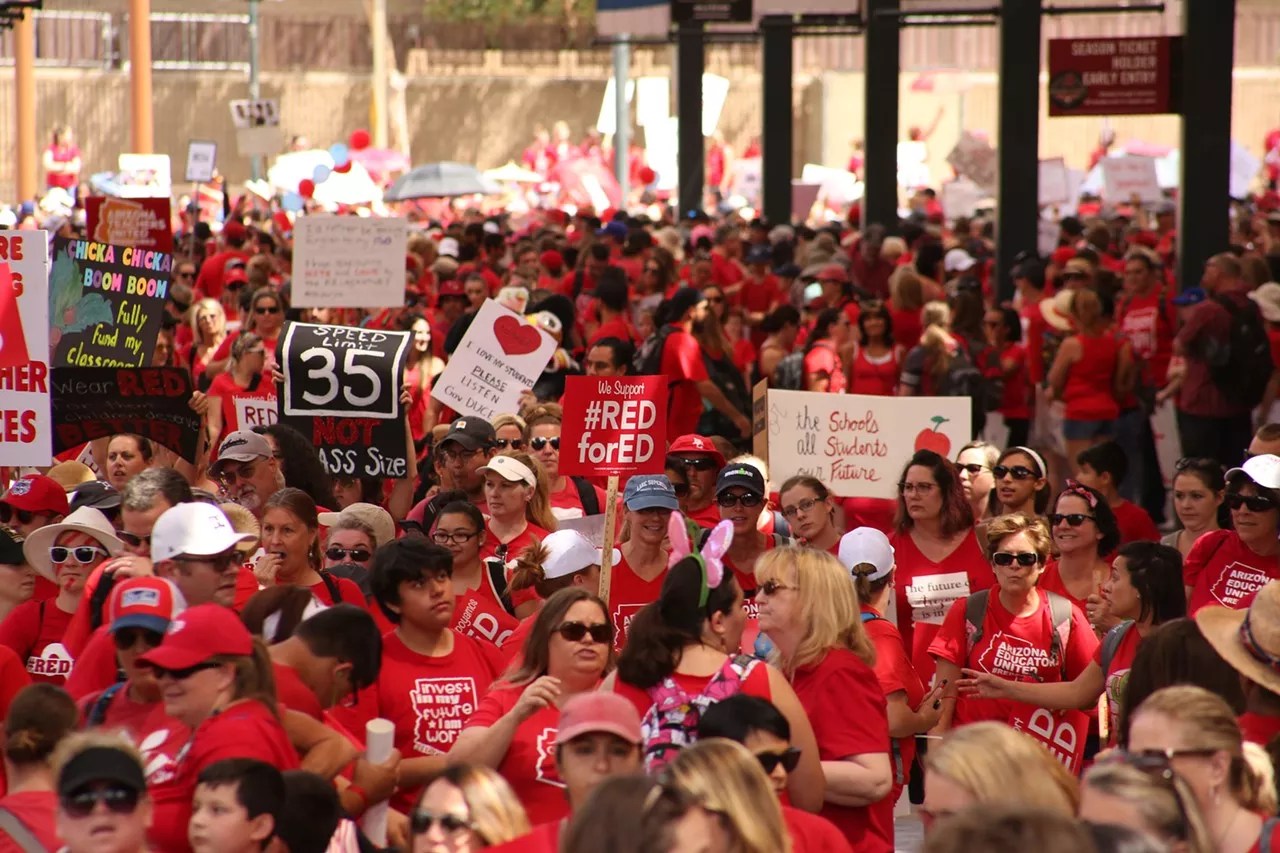
A quarter of teacher vacancies in Arizona remain unfilled.
Tim Vasquez
Teacher retention down, absenteeism up
When Hounihan encounters a ninth-grader who isn’t reading like one, her mind goes to teacher retention.
While it’s hard to blame teachers for moving to new districts, given the sorry state of teacher pay in Arizona, high rates of teacher turnover can hurt students. A study by researchers at Vanderbilt University and the University of Florida found that losing a teacher in the midst of the school year is linked with a loss of between 32 and 72 instructional days.
Arizona has largely struggled with retaining high-quality teachers. A quarter of teacher vacancies across the state for the 2024-25 school year remain unfilled, while 52.2% of the vacancies are filled by teachers who do not meet the state’s standard certification requirements, according to the Arizona School Personnel Administrators Association.
Staffing up would certainly help, but it’s not the only solution. Education advocates point to preschool access as a key factor when it comes to literacy rates, and studies show that students who attend high-quality preschool programs often do better in the long term. But for many Arizona families, preschool is not an option.
Arizona currently ranks 43rd in the nation for preschool access. The 2023 State of Preschool Yearbook from the National Institute for Early Education Research at Rutgers University notes that 4% of Arizona’s four-year-olds attended a state-funded preschool program during the 2022-23 school year, compared with 35% nationwide.
Literacy rates also are influenced by chronic absenteeism, which has worsened since the pandemic.
According to a report from the Helios Education Foundation, chronic absenteeism especially affects a host of demographic groups: economically disadvantaged students, non-English-speaking students, American Indian or Alaska Native students, Black/African American students and Hispanic students.
Thirty-five percent of Arizona’s economically disadvantaged students are chronically absent, compared with just 28% of their non-disadvantaged peers. Georgetown University-based think tank FutureEd has tracked chronic absenteeism rates since the 2018-19 school year. It found that Arizona had the 15th-highest chronic absenteeism rate in the country for the 2022-23 school year, the last for which full data is available.
Clark, Arizona’s literacy director, said curtailing low attendance is a critical component of advancing students’ literacy rates. Much of the rest has been shouldered not by schools but instead by nonprofits.
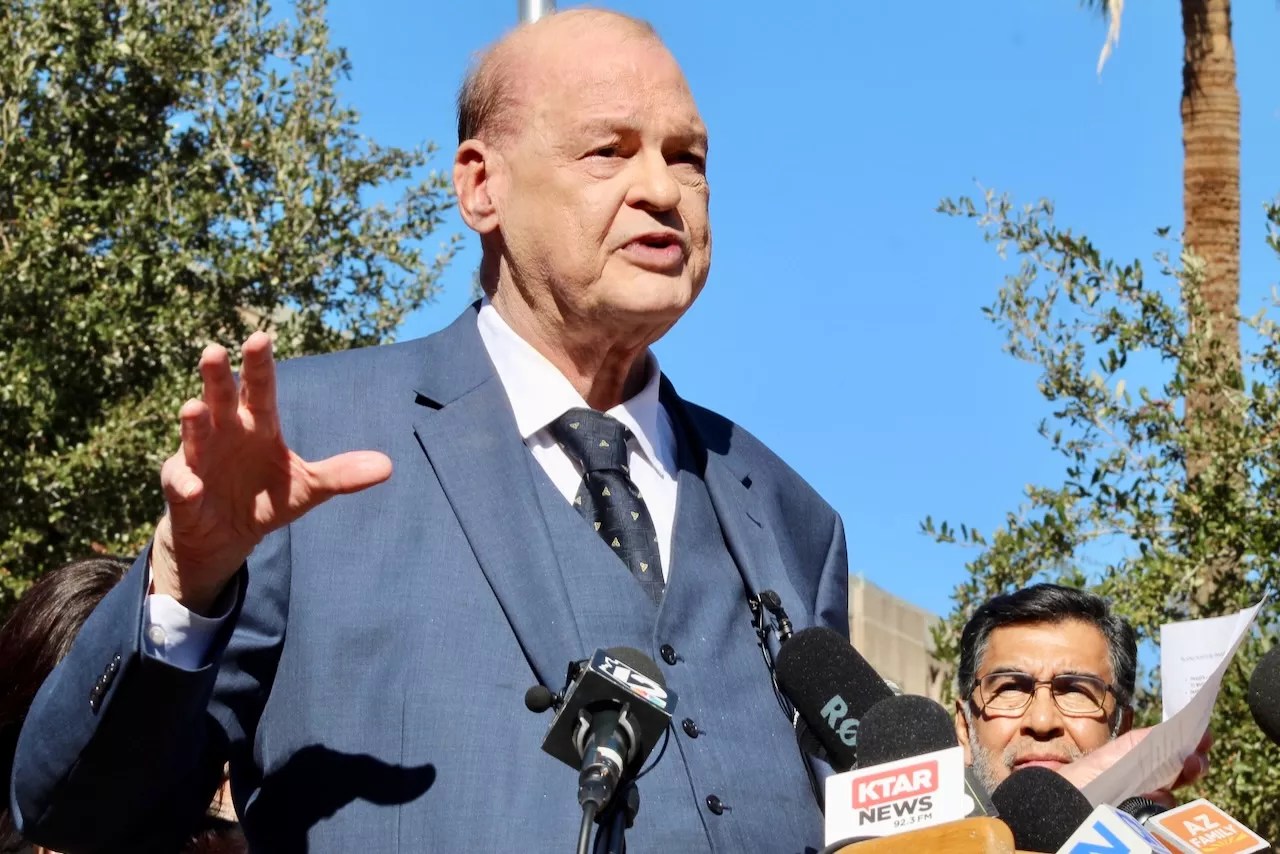
Arizona Superintendent of Public Instruction Tom Horne has battled against dual-language immersion programs, despite research showing that they help literacy rates.
TJ L’Heureux
Organizations doing the work
To address the literacy gaps that the state education system apparently cannot fix, third-party organizations are stepping in. Read On Arizona has formed several partnerships to improve school readiness and third-grade reading outcomes.
The California-based nonprofit Raising a Reader promotes equity-based learning, encouraging parents to work with their kids at home to develop a love for reading. The organization’s Classic Red Book Bag program sends Arizona students home with five books each week and encourages parents to read with their children. Parents are instructed to use evidence-based strategies while reading, such as asking the children questions about the story or about the accompanying photos. That way, students stay engaged while reading in the reassuring presence of a trusted caregiver.
Raising a Reader serves about 2,300 children across Arizona, focusing on students in kindergarten through third grade. Suzanne Metcalf, the organization’s director of marketing and communications, stresses the importance of investing in this type of education.
“Every dollar invested in early literacy yields lifelong benefits,” she said. “It’s a lifelong benefit, not just for the child but for the families.”
Stand for Children Arizona’s Growing Readers is a 10-week program that teaches parents the basics of literacy and how they can help at home. Growing Readers assists about 600 families across the state each year, focusing primarily on Title I schools, which serve lower-income students who need additional support.
Stand for Children Arizona also advocates for education policies, such as 2020’s Proposition 208, which would have funded education through a tax on high earners but was overturned by the courts. The organization also has pushed to make dual-language learning available in classrooms.
Since 2001, Arizona has been beholden to Proposition 203, which disavows multi-language classroom learning and requires that students are taught primarily in English. The stated purpose of this legislation was to “acquire a good knowledge of English, thereby allowing them to fully participate in the American Dream.” But 20 years later, the proposition has yet to prove its efficacy.
The ban on multi-language learning hurts Arizona’s immigrant communities. Non-English speaking students have dramatically lower literacy rates, with 86% of these children falling far below the average rate. Research shows that dual immersion programs, which allow students to learn in their native tongue and in English, have higher success rates. But Arizona Superintendent of Public Instruction Tom Horne has repeatedly disavowed them, suing schools that don’t comply with the “English only” approach.
Earlier this month, a Maricopa County Superior Court judge dismissed a case filed by Carmen Chenal, Horne’s wife, against Creighton Elementary School District over its dual-language program. It is the second case lost by Horne as he continues the crusade targeting schools using a multi-language model.
To education advocates – for whom Horne has been an especially malevolent force – it’s one more example of how Arizona gets in the way of educating its children.
“The state has, unfortunately, been derelict in fulfilling their constitutional responsibility,” Mamani said. “It’s in the constitution of Arizona that they should have funded, equitable schools, and that’s not what’s happening.”